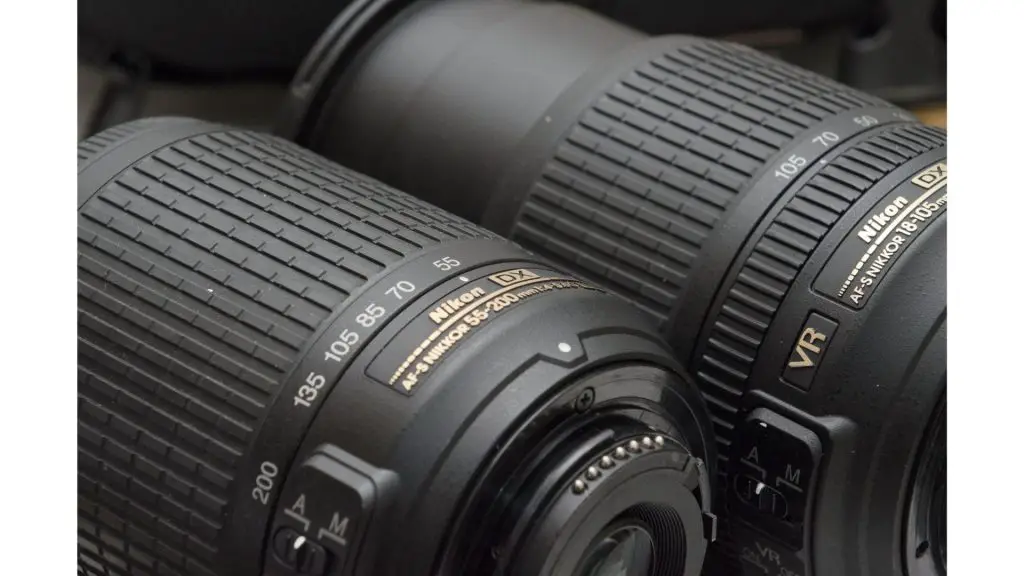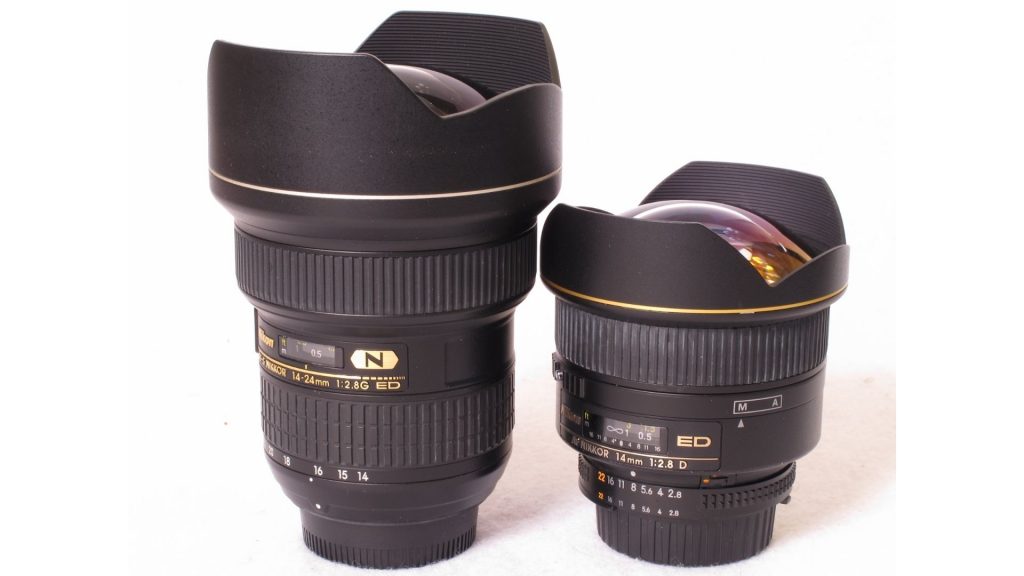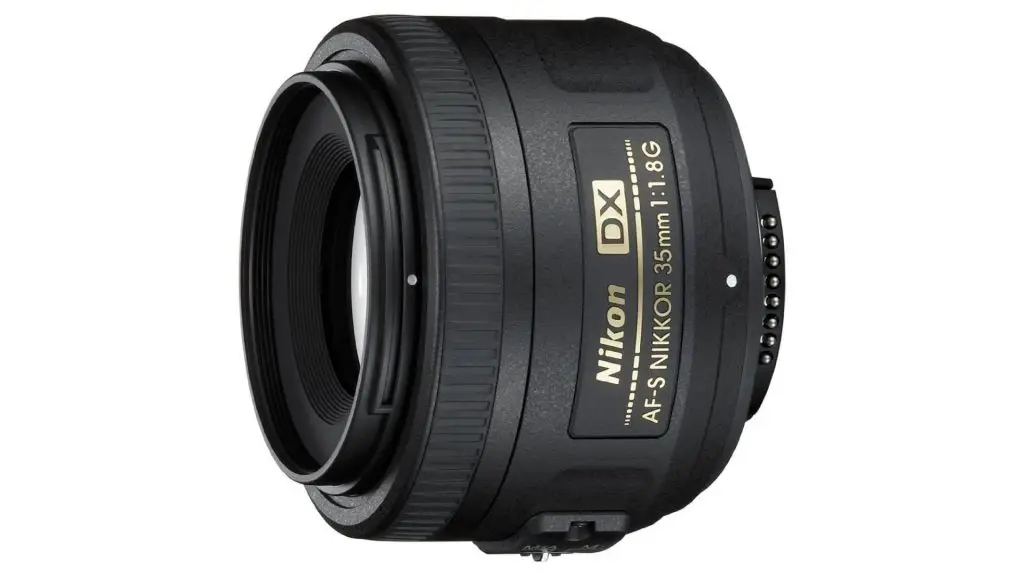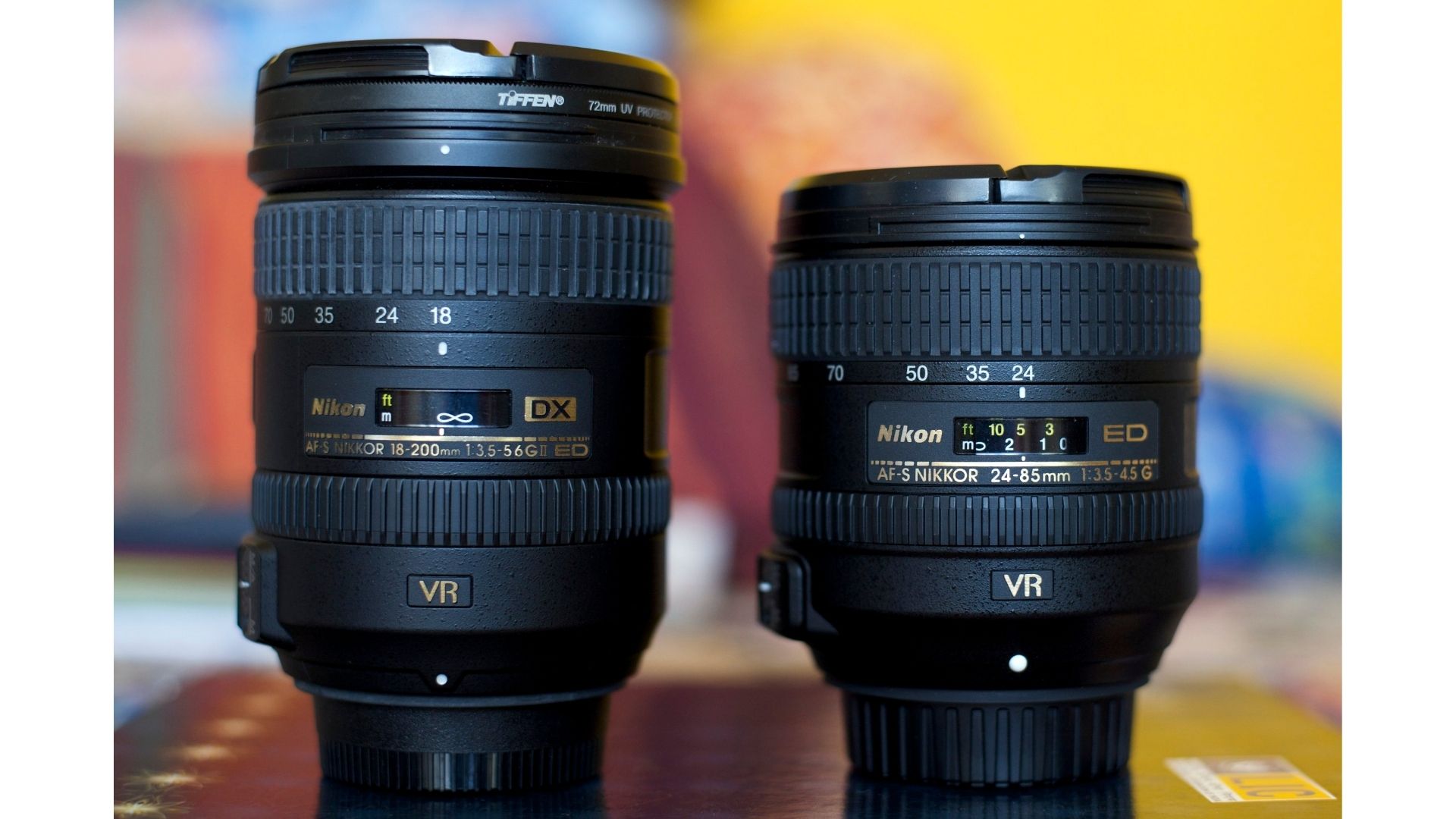The debate of FX vs DX lenses or FX vs DX cameras is not difficult. This article distinguishes between DX and FX lenses with the help of a table. Furthermore, there is also an easy and solid guide to know the camera that fits suitable for you. After reading the article, you’ll be able to tell if a lens is DX or FX.
Nikon FX and DX lenses refer to the image sensor formats that the lenses are designed to work with. Nikon produces DSLRs with these two sensor formats (FX and DX), which are sometimes known as full-frame and APS-C (or crop sensor, respectively).
What are DX lenses?
Nikon’s DX lenses are designed specifically for Nikon DX cameras, which are crop sensor cameras. DX cameras use sensors that are roughly 24mm by 16mm in size, or about 2/3rds the size of a full-frame FX sensor. DX lenses work perfectly on DX-format cameras.
In comparison to FX cameras and lenses, this size reduction enables smaller and more economical cameras and lenses.
DX lenses can be mounted on a camera that features an FX sensor as well.

What are FX lenses?
Full-frame sensors, measuring 36mm x 24mm, are used in FX . the Nikon camera system indicates that the camera is a full-frame camera, and FX lenses are designed for full-frame FX-format cameras.
When it comes to Nikon cameras, you won’t be the first to wonder what FX stands for.
Fx lenses can be mounted on a camera that has a DX sensor body.
The Nikon AF-S FX NIKKOR 17-35mm f/2.8D IF-ED is an example of an FX lens.

Top differences between FX and DX lenses
| FX lenses | DX lenses | |
| Performance in low light | Because more light falls on a larger matrix, each pixel may be made extremely bold, making halftones and color more easily expressed. | DX lenses fail to present a better result in low light due to a smaller sensor that catches less light. |
| Performance on the alternative format camera body | An FX lens works smoothly on a camera body doesn’t matter the camera it is mounted on. | A DX lens on a DX-format camera works more smoothly rather than on an FX-format camera. |
| Performance in high ISO | FX lenses do an outstanding job at high ISO, with vibrant colors and noise that resembles film grain. | At high ISO, DX lenses are no longer inferior. |
| Scope | In case of an up-gradation to your camera body, you don’t need to spend on other lenses. | In case of an up-gradation to your camera body, you might fail to bring your DX lenses into use. |
| Ultra-wide angle | FX lenses offer an ultra-wide-angle view. | DX lenses do not offer an ultra-wide-angle view. |
| Close Upshots | As FX lenses have a wider frame, focusing on these lenses is an issue. | DX lenses have the advantage of being a crop factor. A small frame means better focus |
| Weight | The weight of an FX lens will be at least twice that of an ordinary lens. | The weight of a DX lens is less than the weight of an FX lens. |
| Price Tag | FX lenses carry a heavy price tag. | DX lenses are mostly budget-friendly. |
Golden Rule To Find Focal length of FX or DX Lenses On Alternative Cameras
The most irritating thing in FX vs DX lenses is finding the focal length of the alternative lens. But a very short and useful formula is discussed here.
Read Also: Can I use Nikon lens on Canon camera?
Corresponding Focal Length For DX Camera While Using FX Camera
To find the corresponding focal length for DX, simply divide the actual FX focal length by 1.5.
A 28mm lens on an FX body, for example, has the same angle of view as an 18mm lens on a DX body. Let’s find this.
28/1.5 = 18.6
Because 19mm isn’t a common focal length and the real divisor is slightly more than 1.5 in practice, we choose to round to 18.
Thus, if you shoot with a 28mm lens on an FX camera and want to shoot the same angle of view on a DX body, you’ll need an 18mm lens.
Similarly, If I’m using a 28mm lens on my D5 (FX body) and want to get the same angle of view on my D500 (DX body), I’ll use an 18mm lens on D500. So,
14mm focal length becomes equivalent to 9mm on DX
18mm focal length becomes equivalent to 12mm on DX
20mm focal length becomes equivalent to 13mm on DX ( Close to 14mm )
24mm focal length becomes equivalent to 16mm on DX
28mm focal length becomes equivalent to 18mm on DX
35mm focal length becomes equivalent to 23mm on DX ( close to 24mm )
50mm focal length becomes equivalent to 33mm on DX ( close to 35mm )
85mm focal length becomes equivalent to 57mm on DX ( Close tp 55mm)
105mm focal length becomes equivalent to 70mm on DX
135mm focal length becomes equivalent to 90mm on DX
200mm focal length becomes equivalent to 133mm on DX ( Close to 135mm )
300mm focal length becomes equivalent to 200mm on DX
400mm focal length becomes equivalent to 267mm on DX
500mm focal length becomes equivalent to 333mm on DX
600mm focal length becomes equivalent to 400mm on DX
Corresponding Focal Length for FX Camera While Using DX Camera
In this case, to find the corresponding focal length for the FX camera, simply multiply the actual DX focal length by 1.5.
If you use the same 28mm lens on an FX and DX body, you’ll obtain the same angle of view as a 42mm lens on the DX body. Let’s find out how
28 * 1.5 = 42
Because the DX sensor crops the angle of view compared to the bigger FX sensor, we multiply in this situation.
Assume I just have one lens that I need to use on both my D5 (FX body) and my D500 (DX body). I’ll have a complete angle of vision on the D5, but a cropped angle of view on the D500. Here are the figures that illustrate this:
14mm focal length on FX becomes equivalent to 21mm on DX
18mm focal length on FX becomes equivalent to 27mm on DX
20mm focal length on FX becomes equivalent to 30mm on DX
24mm focal length on FX becomes equivalent to 36mm on DX
28mm focal length on FX becomes equivalent to 42mm on DX
35mm focal length on FX becomes equivalent to 53mm on DX
50mm focal length on FX becomes equivalent to 75mm on DX
85mm focal length on FX becomes equivalent to 128mm on DX
105mm focal length on FX becomes equivalent to 158mm on DX
135mm focal length on FX becomes equivalent to 203mm on DX
200mm focal length on FX becomes equivalent to 300mm on DX
300mm focal length on FX becomes equivalent to 450mm on DX
400mm focal length on FX becomes equivalent to 600mm on DX
500mm focal length on FX becomes equivalent to 750mm on DX
600mm focal length on FX becomes equivalent to 900mm on DX
Read Also: How to attach a camera strap?
Is the Crop Factor Affected By Lenses?
The answer is both Yes and No. The sensor is what determines the crop factor, however, let’s run through different instances because there is one exception:
DX-Format Camera + FX or DX lens
Whatever lens you attach to a DX sensor camera, will have a crop factor of 1.5 applied. As a result, a 24mm lens on a DX sensor will appear to be 36mm on a full-frame sensor.
FX-Format camera + FX lens
Full-frame sensors are used in FX cameras, and the FX lens will not be cropped. When mounted to an FX camera, a 24mm FX lens will have the same field of vision as a 24mm lens.
FX-Format Camera + DX Lens ( Special case )
You can’t use a crop sensor lens on a full-frame camera in the Canon family without risking damage and a very harsh vignette. In the Nikon system, however, you can safely utilize a DX lens on an FX camera.
Because lenses have a smaller image circle, the camera will simply apply a crop to match the lens.
As a result, the camera will simply take a smaller section of the full-frame sensor and display only the image from that subsection. This acts as a crop factor that corresponds to a DX sensor.
As a result, a 24mm lens with a 1.5 crop factor will appear to be the full-frame equivalent of a 36mm lens.
This is the most discussed case or scenario in the whole FX vs DX lenses discussion.
Read Also: DSLR vs Mirrorless vs Cinema Camera
How To Tell If a Lens Is FX or DX?
For DX lenses
If you’re using a Nikon-branded Nikkor lens, it’ll be prominently labeled with ‘DX’ somewhere on the lens barrel to indicate that it’s a DX lens.

For FX lenses
On the other hand, if a Nikon Nikkor lens does not have the DX designation, you can presume it is an FX camera. In a strict sense, there is no such thing as an FX lens because it is simply the full-frame standard. It is for this reason that they are not labeled as such.

What Lenses Are Compatible With My Nikon DSLR Camera?
You will find an answer to the question of what lenses will fit your Nikon DSLR.
What Cameras Are Compatible With DX Lenses?
Unlike the Canon lens system, crop sensor lenses can be used on full-frame cameras. As a result, DX lenses can be used on FX-format cameras. The ‘auto DX crop’ feature on Nikon cameras compensates for crop sensor lenses automatically. Any DX or FX Nikon camera can be used with any DX lens.
What Cameras Are Compatible With An FX Lens?
FX lenses are compatible with all Nikon FX and DX-format cameras. You may have read that DX lenses cannot be used with full-frame FX cameras, but this is not the case.
Read Also: How to safely format SD card for your camera?
Who should use the DX lens?
The one who has a limited budget because of the full wide-angle coverage that many DX lenses provide at a cheaper price range.
Take the Nikon AF-P DX NIKKOR 10-20mm f/4.5-5.6G VR, for example, which offers a 15-30mm equivalent focal length.
It’s a whole different story if you choose a full-frame wide-angle lens with the same equivalent focal length!
The two lenses below are both FX wide-angle lenses that cost far more than the DX lens above.
Nikon AF-S FX NIKKOR 17-35mm f/2.8D IF-ED
Nikon AF-S NIKKOR 14-24mm f/2.8G ED,
Of course, the focal length isn’t everything, and some FX lenses offer far better maximum aperture capabilities, making them ‘faster’ lenses.
They can also maintain an aperture of f2.8 across the focal length range, whereas the DX lens above spans from f/4.5 to f/5.6.
If you’re on a budget, you can see why folks might go for an EF-S lens in this situation.
At the end of the day, if you need a wide angle for your subject and don’t want to spend the money, a DX will suffice.
Who should use the FX lens?
Those who have enough budget to spend on FX lenses and also have FX-format cameras should use FX lenses. If their main category in photography involves low light, FX lenses are a must-go.
FX lenses are expensive because of the sensor. In addition to this, FX cameras are heavy as well. This makes them difficult to transport and carry around the neck.
Read Also: Charge your Nikon Camera battery without a charger
Read Also: Charge your Canon camera battery without a charger
Format of Tamron and Sigma lenses
It wonders many that third-party lenses such as Tamron and Sigma have FX-format or DX-format. As these are lenses as well, therefore they fall into the argument of FX vs DX lenses too. Here are the answers.
Format of Tamron lenses
Tamron Di (Digitally Integrated) lenses are developed for FX ( full-frame ) and DX( APS-C) format digital SLR cameras and have an optical design adapted to digital camera features.
Format of Sigma lenses
Sigma DG lenses are developed for FX ( full-frame ) and DX ( APS-C ) format digital SLR cameras. These lenses can be used on any camera that features a full-frame or crop sensor.
Conclusion
FX lenses give a more sigh of relief, comfort, and joy once you see the photo you have captured, doesn’t matter the camera format it is mounted on. But the price has always been an issue.
DX lenses work fine for the macro and close-up shots category of photography. They fail to give better output in a few certain conditions. DX lenses are recommended for newbies who are mostly unaware of the functionality. Meanwhile, amateurs and professionals can use DX lenses as well.
This is the summary of FX vs DX lenses that has details in all the segments stated above.
FAQs
Are FX lenses better than DX?
Yes. FX is superior to DX if you compare them strictly on a technological level. This is due to better features such as aperture as well as focal length and performance in some critical situations such as capturing low light and fast-moving objects. The only thing that holds back is the price tag.
What happens when you put an FX lens on a DX-format camera?
When an FX lens image circle is projected onto a DX sensor, the image is cropped by around 1/3rd. This crop has the same effect as enlarging the image by 1.5 times. This means that a 24mm FX lens on a DX-format camera produces the same angle of view as a 36mm FX lens on an FX camera.
Can you use an FX lens on a DX camera body?
Yes. It is possible to utilize DX and FX lenses interchangeably. Your full-frame FX lenses will still operate if you go from an FX camera to a DX-format DSLR. Because the DX sensor covers a smaller percentage of the image projected by the lens, a 1.5x crop factor is introduced. So, named because the smaller sensor crops the image relative to a 35mm film frame. This means that a 24mm lens on a DX sensor camera, for example, delivers a 36mm vision.
Can you use a DX lens on an FX camera body?
Yes. When a DX lens is mounted to a Nikon D-SLR with an FX format, the camera’s DX-Crop Mode is activated, resulting in a 1.5x magnification (cropping) factor. In this way, the camera records photos from the sensor’s central region and also avoids vignetting.
This is exactly as described by Nikon on the official website.
Should I buy FX or DX lenses?
This depends on the budget, your requirements, future planning of camera up-gradation, and camera format at the moment you have. For low budget and DX-format, opt for DX lenses. But if you have a good budget, opt for FX lenses as they fit on DX as well as FX sensor cameras and perform extremely well than DX lenses.
Can Nikon Z use DX lenses?
The Z cameras immediately apply a DX crop and everything appears wonderful as you shoot; unlike a DSLR, the DX image always fills the finder. The most recent AFS (1984 – present) and AFP DX lenses perform admirably. Manual focus is required with older DX lenses, such as the 10.5mm fisheye.
How can you tell if a lens is DX or FX?
“The letters DX next to the Nikon name indicate that this lens is intended for cameras having a DX-format sensor, such as the Nikon D300S or D7000.” If you don’t see DX, the lens is designed for FX-format cameras such as the Nikon D3X, D3S, or D700.
What is the difference between Nikon ED and DX lenses?
Because less glass and a smaller lens barrel are necessary to achieve a comparable field of vision for a lens that goes on a DX camera, such as the Nikon D5300 and D3200 series, when compared to a full-frame camera, Nikon DX lenses are generally smaller and lighter than Nikon FX lenses.

